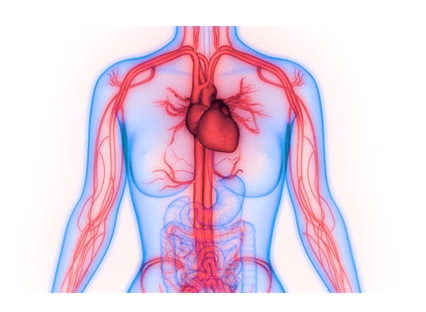
Vascular Interventions

There are a variety of illnesses and structural issues that can impact the veins and arteries, however these issues can be remedied with vascular treatments. Vascular interventions can be performed in an office setting or in an angio suite, depending on whether they are complex heart procedures that require longer and higher-risk interventions, or endovascular procedures that are minimally invasive and only require small puncture incisions into the skin and vessels. Here are a few common problems and how they could be addressed with vascular percutaneous treatments.
Clogged arteries can develop everywhere, not just in the heart. Blood is transported to the neck and head via the carotid arteries, which are situated in the neck. These may get clogged with cholesterol plaques, resulting in decreased blood flow to the brain or the risk of the plaque breaking off and causing a stroke. The plaque is treated using stents, which are metal mesh that are put inside the artery to open the blocked region, or it can be done as a surgery and conducted in an operating room. Endarterectomies can take place in any artery in the body, but carotid endarterectomies are the most common and well-known.
Aneurysms are a type of aneurysm that develops when a weak spot in the arterial wall weakens, causing the artery to bulge outward. Aneurysms are a cause for concern since the weaker spot might burst owing to arterial pressure. Aneurysms in the brain are common, but they're treated by a neurosurgical interventionalist and neurosurgeons. The other more common aneurysm is in the abdominal aorta, which is likewise treated with a specific big mesh that is inserted via a catheter to avoid surgery. These operations are termed endovascular and are conducted in a hospital operating room to repair the weakest spot in the artery to prevent rupture; in more difficult instances, surgery is required.
Varicose veins are veins that are commonly present in the legs and are caused by failing valves in the veins that prevent blood from returning to the heart. This causes blood to collect in the veins, resulting in varicose veins, twisted veins visible on the skin. In an ambulatory center environment, endovascular ablations treatment scars the vein to prevent any additional blood flow through it.
Peripheral vascular disease causes artery constriction in the extremities, particularly the legs. With weak pulses, this constriction restricts proper blood flow in the legs. Stenting, atherectomy, and balloon angioplasty are some of the operations that can help with this constriction, as well as bypass surgery in the most severe instances. All of these techniques have the capacity to widen the constriction and allow appropriate blood flow.
Stenting is a procedure that involves placing a permanent stainless steel stent into the artery to keep it open or patent. Balloon angioplasty involves inserting a balloon device into the artery to extend it, while atherectomy involves removing the cholesterol plaques that are obstructing the artery with sophisticated technologies, both of which may be done through a tiny incision in the skin without the need for surgery.
Have you been diagnosed with, or do you suffer from, any of the aforementioned artery or vein problems? A cardiovascular expert might be able to help you alleviate your symptoms and enhance your quality of life.
We are just a call or click away. To learn more, book an appointment online or over the phone with PeachState Advanced Cardiac & Endovascular. We have several locations in Georgia: Newnan, Atlanta, & Griffin.
You Might Also Enjoy...


Feeling Faint

Should I be worried about my numb feet?

Can leg cramps be a sign of something serious?

Meet Dr. Odiete - PACE Cardiovascular Specilaist


